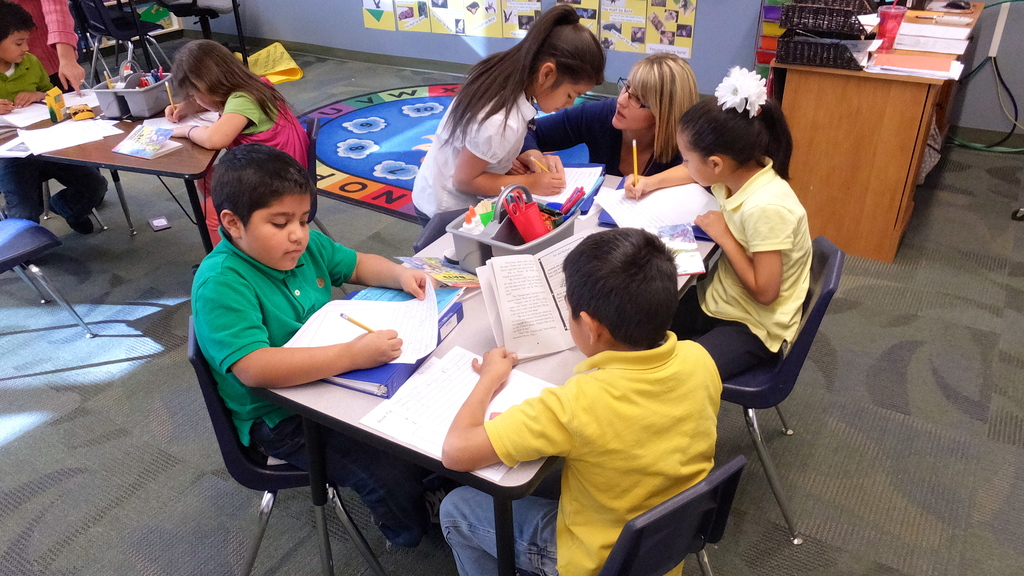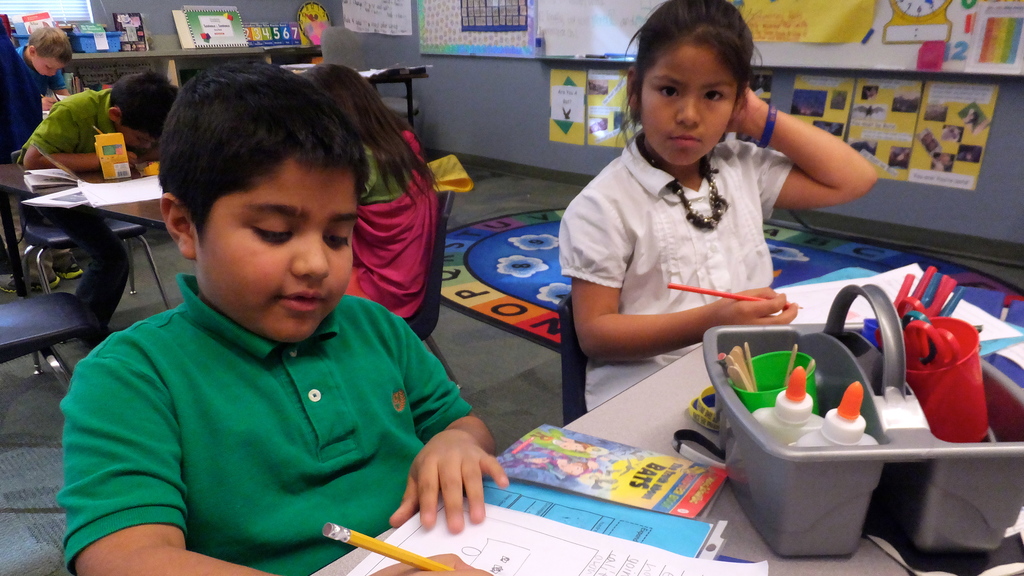Despite a dramatic academic turnaround, principal Melissa Langan insists Van Buren Elementary School is no overnight success story.
In just one year, the Caldwell school improved from a two-star school to a five-star school in the state’s five-star rating system.

Van Buren joined 14 percent of the state’s schools in earning a five-star rating – the highest rating possible.
Only one Idaho school posted a bigger turnaround; Pocatello’s Kinport Academy jumped from one star to five.
“The great thing is we didn’t need a star ranking when we were at two stars to tell us,” Langan said. “We were already working as staff to address our needs.”
Van Buren — a school more than 100 years old, granted a new building five years ago — has a history of success. In 2011-12, the State Board of Education recognized Van Buren as one of its Distinguished School award winners, due to improved test scores posted by Hispanic students, which account for about 60 percent of the school’s population.
But at the end of the year, Idaho Standards Achievement Tests scores didn’t measure up. In language usage, 58.4 percent of fifth graders scored at proficient or advanced levels, and more than 41 percent scored below proficient or basic levels.
Still, nobody panicked.
Langan, instructional coach Tabby Bruegeman and the school’s 68 staffers focused on working as a team. As they’ve done for about five years, teachers dedicated 45 minutes each day to grade-level collaboration. Every six weeks, teachers got a chance to meet again and work together across grade levels.
“The staff has ownership, and that’s evident in fact they’re doing daily collaboration, owning their own professional development and collaborating to identify where they need to go with instruction and seek out what they need to meet their goals,” Bruegeman said. “It’s evident it’s coming from them rather than being a top-down approach.”
Additionally, the staff began working last year to implement Idaho Core Standards, a year ahead of schedule, and developed a common academic language students are expected to understand and use.
Now, students speak in complex sentences, making sure to elaborate on their simple sentences with a word such as “because” and an independent clause explaining their reasoning.
Inside Camie McReynolds’ classroom, second-graders use five-syllable words such as “echolocation” to describe how bats overcome darkness to hunt and fly.
The collaborative approach and adoption of academic language has paid dividends, with ISAT language usage scores increasing by double digits in some grade levels.
- In third grade, the percentage of students scoring proficient or advanced in language increased from 63.2 percent two years ago to 73.8 percent last year.
- In fifth grade, the percent of students proficient or advanced jumped from 58.4 percent two years ago to 74 percent last year.

“Collaboration is part of it, but every teacher is wiling to improve their teaching skills,” McReynolds said. “We’re confident in learning ourselves, which, in turn, makes us willing to put in the extra effort.”
Langan said the five-star rating was important, and knows Van Buren’s model will be used as an example statewide. But she and Bruegeman are more impressed with the overall culture developed at the school. Students feel safe, and not a single teacher left between last year and this year.
“There is no award given for that,” Bruegeman said. “But that doesn’t happen often. This is a place where people want to be, and that says a lot.”
